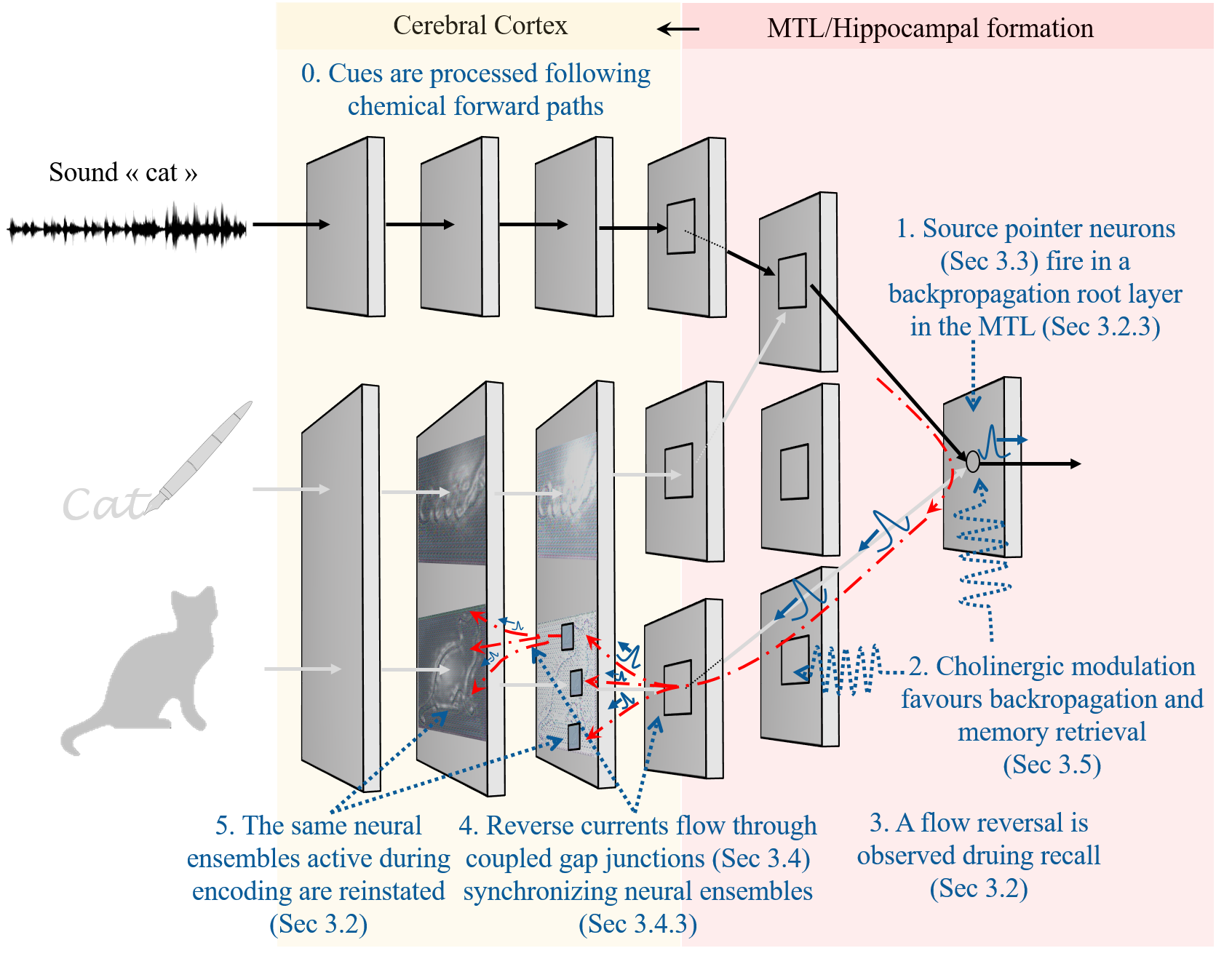The backpropagation-based recollection hypothesis: Backpropagated action potentials mediate recall, imagination, language understanding and naming
Ever since the advent of the neuron doctrine more than a century ago, information processing in the brain is widely believed to mainly follow the forward pre to post-synaptic neurons direction. Challenging this prevalent view, in this paper, we emit the backpropagation-based recollection hypothesis as follows: weak and fast fading Action Potentials following the (highest weight) post to pre-synaptic backward pathways, mediate explicit cue-based memory recall. This includes also the tasks of imagination, future episodic thinking, language understanding and associating names to various stimuli. These signals originate in highly invariant neurons, which uniquely respond to some specific stimuli (e.g. image of a cat). They then travel backwards to reactivate the same populations of neurons that uniquely respond to this specific stimuli during perception, thus recreating "offline" an experience that is similar. After stating our hypothesis in details, we challenge its assumptions through a thorough literature review. We find abundant evidence that supports most of its assumptions, including the existence of backpropagating signals that have interesting properties. We then leverage simulations based on existing spiking neural network models with STDP learning to show the computational feasibility of using such a mechanism to map the image of an object to its name with the same high accuracy as a state of the art machine learning classifier. Although not yet a theory, we believe this hypothesis presents a paradigm shift that is worth further investigating: it opens the way, among others, to new interpretations of language acquisition and understanding, the interplay between memories encoding and retrieval, as well as reconciling the apparently opposed views between sparse coding and distributed representations.
PDF Abstract
